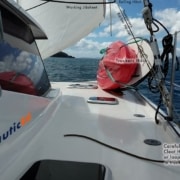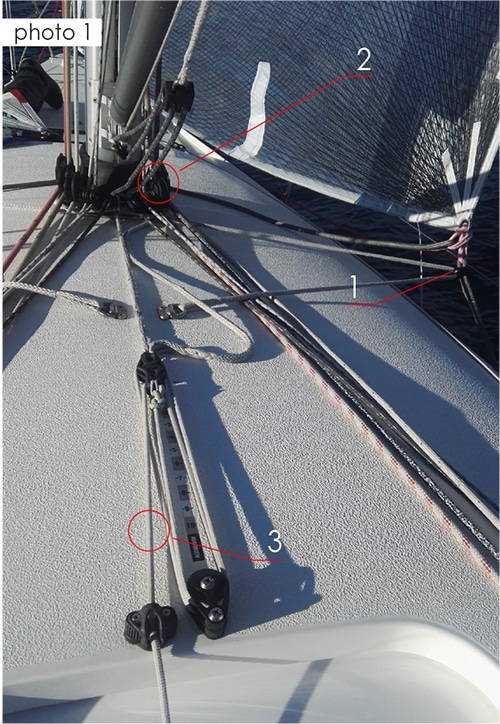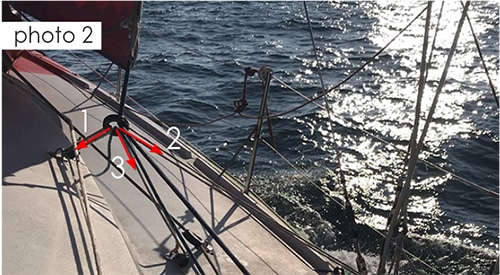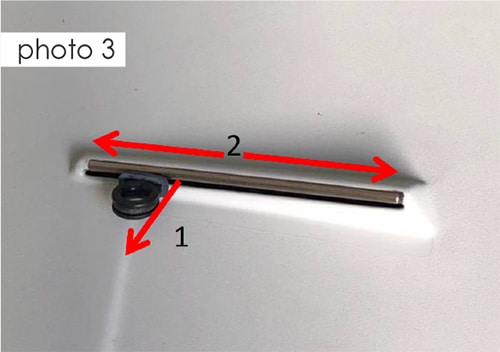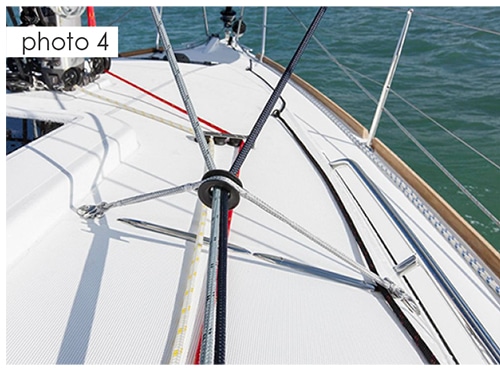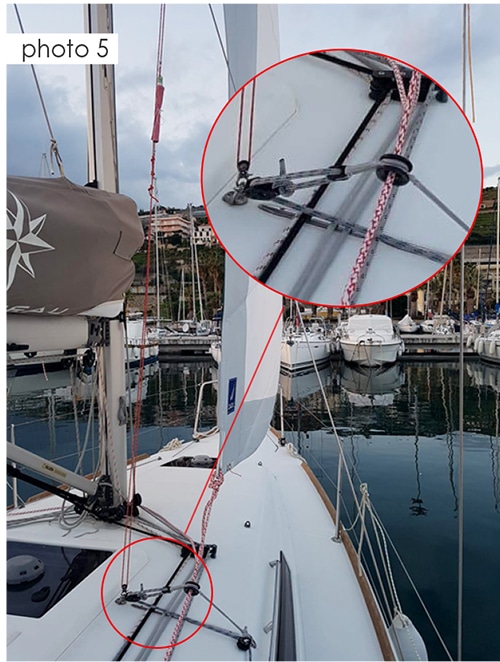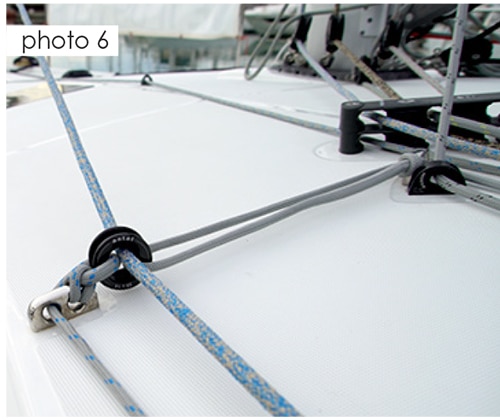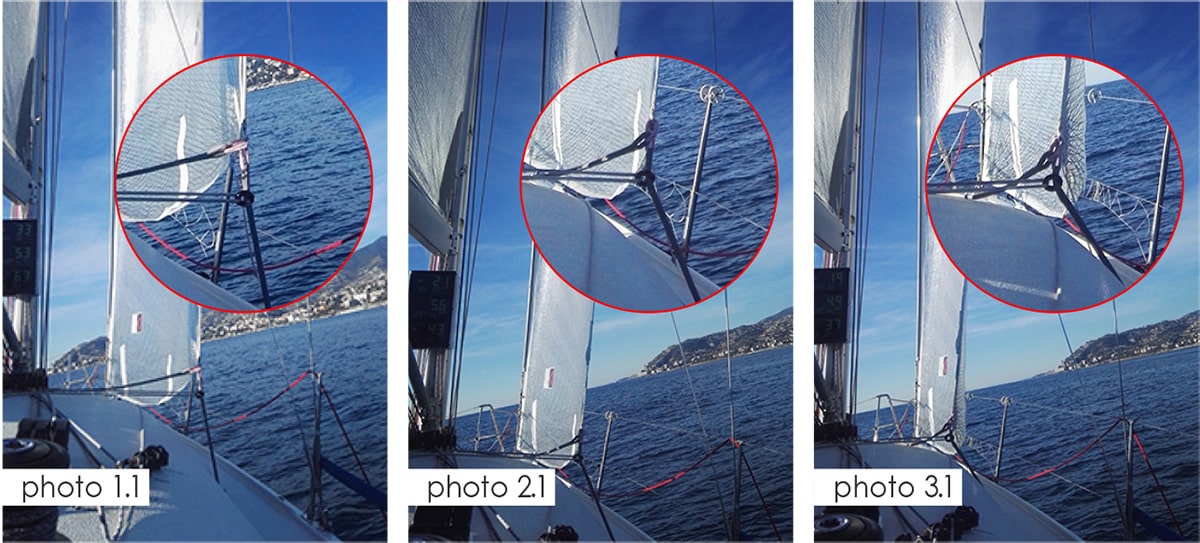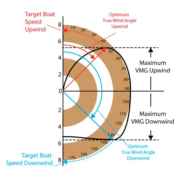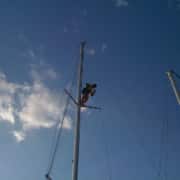The Barber Hauler User Guide
This article is brought to you through NauticEd’s partnership relationship with SVN Magazine, Europe’s largest and most respected Sailing eMagazine. SVN Magazine is a free magazine and publishes in English and Italian. You can find a multitude of helpful articles just like this one when you get a FREE subscription to SVN courtesy of NauticEd.

To subscribe for FREE, click the Banner above and enter your email address. You will receive the monthly eMagazine for free – no strings, lines, or sheets.
NauticEd is an Internationally recognized Sailing Education, Certification, and Licensing company. Being a great sailor means you have practical skills and have theory knowledge. NauticEd teaches theory via our eLearning platform while world-class practical sailing training and assessment is conducted by our network of on-the-water training schools worldwide.
Check us out at www.nauticed.org
This article discusses the Barber Hauler
Created and developed on racing boats, this device is now being used on cruise boats. Let’s find out what the barber hauler is and how it is used.

The barber hauler owes its name to the Barber brothers, who introduced it for the first time in the 1950s on the Lightning which they raced in the waters off San Diego. In a nutshell, it was a simple line to move the jib clew laterally and inwards to close the jib-mainsail channel and get a tighter angle on the wind. Over the years it has undergone a remarkable development and has ultimately replaced the use of tracks and travelers to adjust the position of the sheet clew of headsails, especially on off-shore racing boats.
Barber haulers can be split into two broad categories: simple tweakers, and complete barber haulers. Tweakers are lines mounted in addition to the tracks and travelers of the headsails. They generally allow only transverse adjustments and are used to move the jib clew inwards, thus narrowing the jib-mainsail channel and getting a tighter angle on the wind. On the other hand, barber haulers completely replace the tracks and travelers of the headsail sheets, as they allow both transverse and vertical adjustment. With these two types of adjustments, the sail sheet can be moved in any direction, always ensuring an optimal setting. There are many other types, suitable for the needs of each individual boat, sail set and sailing type. Let’s see in detail how they work starting from the simplest ones, which can be easily mounted on any boat equipped with jibs with little overlap.
Tweakers
Tweakers consist of a transverse line fastened to a ring at one end, through which the jib sheet is threaded. The line is then led to a block on the deck or deckhouse (2) and connected to a tackle (3) so that it can be adjusted directly from the cockpit even under load (see photo). The photo was taken on an XP-33 (X-Yachts): the central tackle (3) is connected to both sheets of the two starboard and port tweakers, so as to allow simultaneous adjustment. The sheets have another leading block with a fixed point on the roof deck (1) to increase the reduction gear. Under medium wind, depending on sail area and clew position, the load can be high. It is a line that must be sized correctly to avoid breakage, and above all must be able to be adjusted – even under stress.
Barber Haulers
Complete barber haulers are used mainly on boats designed for offshore racing. Their design is more complex, as they require several adjustment lines and leading blocks. The photo n°2, gives us an idea of the array of adjustment possibilities. In this case, the jib clew can be moved in three directions with as many different tackles: inwards (1), outwards (2) and downwards (3). In long offshore regattas, you happen to use all points of sail, so it is necessary to be able to better adjust the sails in any situation. For this reason, you may also move the sheet clew outward to close the jib leech in case you are sailing, for example, on a close reach or beam reach. The barber hauler may also be customized according to the type of sailing to be performed. A typical example is the TP52, which uses the jib for close- hauling only. For this reason, the barber hauler has two adjustments (see photo n°3): a vertical one with a line (1) (in the picture it is completely hauled in and cannot be seen) and a transversal one on a traveler (2). All jibs are drawn with the same foot length or, more precisely, with the same LP (perpendicular to the luff passing through the clew), so they do not need to move the sheet clew much fore-and-aft.
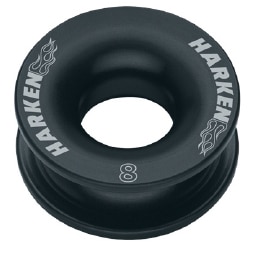
A tweaker ring or eyelet as such is used to thread the barber Hauler lines and the jib sheet together.

To subscribe for FREE, click the Banner above and enter your email address. You will receive the monthly eMagazine for free – no strings, lines, or sheets.
Cruising Boats
As mentioned, the use of barber haulers is also developing on cruise boats. For example, on some Jeanneau models the jib tracks and travelers have been removed and replaced by simple sheet fairleads that cannot be considered barber haulers because, in some cases, they are fixed and cannot be adjusted. The photo n° 4, for instance, shows the sheet clew of a Jeanneau Sun Odyssey 349, where there is no possibility of adjustment and the eyelet is also used to thread the white line to lead the mainsail sheet to the cockpit.
On another Sun Odyssey 349, on the other hand, the owner found a solution to adjust the sheet clew and move it inwards. He added a small tackle to the internal sheet and then lead it to the cockpit for adjustment (see photo n°5). There are many customization possibilities based on the type of boat, sails, and sailing needs.
The Sun Odyssey 410 (photo n°6) is another Jeanneau model where the jib track and travelers have been removed. Unlike the smaller Sun Odyssey 349, in this case, a double adjustment has already been prepared to allow the sheet clew to be moved both transversally and vertically. In addition to the sheet of the jib, the ring is also used to thread two tuning lines with a fixed point and a leading block to the cockpit. The friction generated by the threading inside the small eyelets on the deck is high, and will certainly make it necessary to use a winch for adjustment as soon as the wind starts to strengthen.
Advantages for Cruising
There are three main benefits to using barber haulers on cruise boats.
Safety: Tracks and travelers are always challenging when stepping barefoot on the deck in summer. Removing them therefore greatly reduces the risk of getting various kinds of foot injury, or of tripping and falling.
Tidiness: Tracks and travelers can look rather untidy, so their removal also creates a better overall look. Weight reduction: Using a barber hauler instead of tracks and travelers will save you some weight.
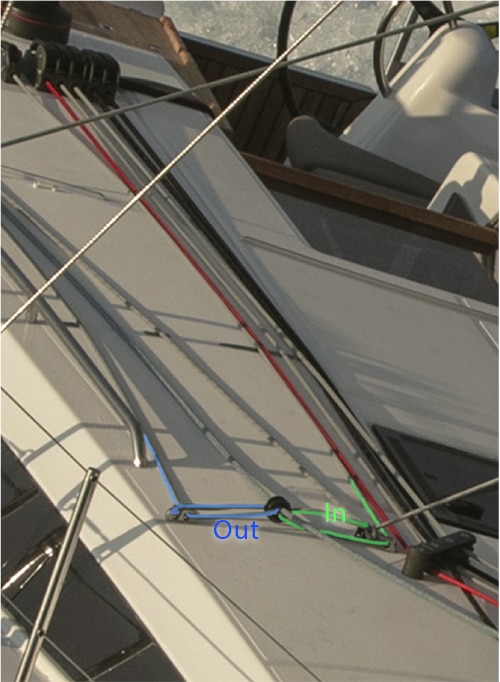
Here aside, the deck of the Sun Odyssey 410, a model where the tracks of the jib sheet traveler have been replaced with a barber adjustable from the side and in height.
Disadvantages
There are basically three disadvantages.
Adjustment: The more adjustment possibilities you have, the harder it is to find the correct position for the sheet clew. Even though this is an advantage for racers, it may become a disadvantage for cruise boaters.
Maintenance: After some years, the small-diameter lines may break, as threading them involves some friction that will cause wear. If they break under a strong wind, it may be dangerous.
Danger: If the sail flaps, the barber hauler’s sheet fairlead ring will start slamming onto the deck, causing possible damage and risks to people nearby.

Above you can see the Jeanneau 410 and how a Barber Hauler adjusting the jib inboard and outboard would significantly affect the gap between the jib and the mainsail.
Costs
Equipping a boat with a barber hauler or a tweaker as an after-sale accessory is not too expensive. The sheet fairlead may cost around 15 Euros and the tuning line, depending on the diameter, may cost a few Euros per meter, and if we want to add a tuning tackle and a pair of leading blocks the cost increases, but remains reasonable. Let’s say, for example, that 100 Euros is enough to make two basic tweakers.
What is a Barber Hauler Used for?
Having reviewed the various types of barber haulers, let’s now look in more detail at how they are used. In the sequence of photos below, we can see different jib adjustments with the tweaker completely loose (1.1), halfway hauled (2.1) and completely hauled (3.1). In the first photo, with the tweaker completely loose, the jib-mainsail channel is wide, and the headsail is flat at the bottom, therefore not very powerful. Such a setting is suitable for medium-strong winds when the boat starts to heel a lot and it is necessary to loosen the mainsheet to be able to sail upwind with an acceptable tilt. In the second photo, with the tweaker halfway through, we can already see an improvement. The sail has a shape at the bottom, and its power is increasing. While hauling the barber you must always check the leech, because if you leave the jib sheet fixed, this will definitely result in closing the trailing edge of the sail. It will, therefore, be necessary to loosen it a little to restore the correct shape.
In the third photo, with the tweaker completely hauled, the foot of the sail becomes too concave and makes the jib-mainsail channel too narrow, creating a backwind on the mainsail at the bottom near the mast. If the problem cannot be removed by moving the jib traveler aft, then the barber hauler is too tight, and it will be necessary to loosen it. However, don’t get carried away by the barber hauler, and avoid hauling it too much because moving the position of the clew a little bit is often enough. After hauling the tweaker, you should always check that no backwind has been created on the mainsail. Do this by moving the jib clew back or by loosening the sheet a bit in order to allow the leech to open and create the right twist to the sail. If a noticeable backwind remains on the mainsail after performing both operations, then the barber hauler is too tight.
It should also be remembered that the stronger the wind gets, the less benefit we will obtain from having the jib clew too inward. As the wind gets stronger, we will have to start flattening the sails. We will also move the mainsail traveler (If you have one) leeward so that the jib-mainsail channel will be narrower. We should also loosen the jib tweaker otherwise a backwind will immediately be created on the mainsail. By loosening it, we will also improve the shape of the sail, making it flatter while reducing the power and tilt of the boat.
Author: Fabio Amoretti is a well-known racer from Imperia. Fabio Amoretti, an expert yachtsman of the Italian Naval League, performs educational activities

To subscribe for FREE, click the Banner above and enter your email address. You will receive the monthly eMagazine for free – no strings, lines, or sheets.
ADDITIONAL NOTES FROM NAUTICED
We really hope you enjoyed the above article from SVN Magazine. To further enhance the article we have created an interactive animation.
Below you can play with the interactive animation to show how the jib can be moved laterally using the Barber Hauler. You can also see how when you ease the mainsail, the slot between the jib and the mainsail closes. At that point you would want to ease out on the Barber Hauler else you will begin to backwind the mainsail.
Click on the various buttons.
This animation below shows a ring-type Barber Hauler where two control lines run back to the cockpit. It allows you to infinitely change the position of the Clew – up/down/inboard/outboard. This changes the sail shape as well as the slot. You can see that using the Barber Hauler in combination with the jib sheet gives you all the control you need. It is inexpensive to install and gives you more control than a forward/aft moving fairlead car track.
NauticEd is an Internationally recognized Sailing Education, Certification, and Licensing company. Being a great sailor means you have practical skills and have theory knowledge. NauticEd teaches theory via our eLearning platform while world-class practical sailing training and assessment is conducted by our network of on-the-water training schools worldwide.
Throughout our courses, we have fantastic learnings as above, all structured in a progressive learning format from beginner to advanced. Certifications and licenses are issued based on learnings, logged experience in a FREE online logbook, and on-the-water skills assessments according to the American National Standards.
Check us out at www.nauticed.org
Next up – How to rig a quick a temporary Barber Hauler on a charter catamaran with a dockline.

